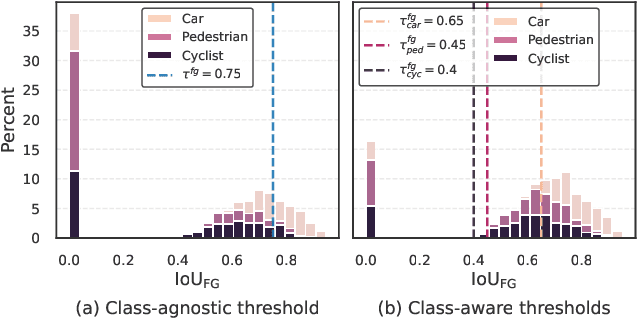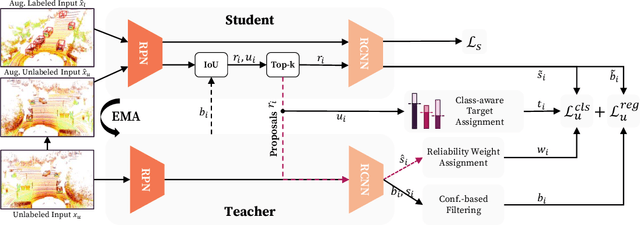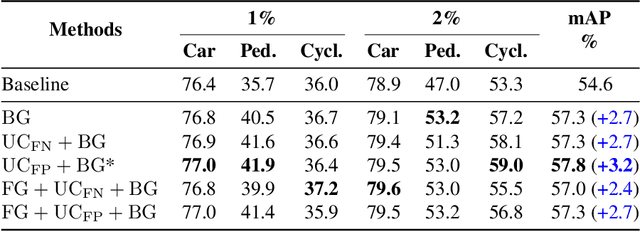Philipp Slusallek
Accept or Deny? Evaluating LLM Fairness and Performance in Loan Approval across Table-to-Text Serialization Approaches
Aug 29, 2025Abstract:Large Language Models (LLMs) are increasingly employed in high-stakes decision-making tasks, such as loan approvals. While their applications expand across domains, LLMs struggle to process tabular data, ensuring fairness and delivering reliable predictions. In this work, we assess the performance and fairness of LLMs on serialized loan approval datasets from three geographically distinct regions: Ghana, Germany, and the United States. Our evaluation focuses on the model's zero-shot and in-context learning (ICL) capabilities. Our results reveal that the choice of serialization (Serialization refers to the process of converting tabular data into text formats suitable for processing by LLMs.) format significantly affects both performance and fairness in LLMs, with certain formats such as GReat and LIFT yielding higher F1 scores but exacerbating fairness disparities. Notably, while ICL improved model performance by 4.9-59.6% relative to zero-shot baselines, its effect on fairness varied considerably across datasets. Our work underscores the importance of effective tabular data representation methods and fairness-aware models to improve the reliability of LLMs in financial decision-making.
Quantum computing and artificial intelligence: status and perspectives
May 29, 2025Abstract:This white paper discusses and explores the various points of intersection between quantum computing and artificial intelligence (AI). It describes how quantum computing could support the development of innovative AI solutions. It also examines use cases of classical AI that can empower research and development in quantum technologies, with a focus on quantum computing and quantum sensing. The purpose of this white paper is to provide a long-term research agenda aimed at addressing foundational questions about how AI and quantum computing interact and benefit one another. It concludes with a set of recommendations and challenges, including how to orchestrate the proposed theoretical work, align quantum AI developments with quantum hardware roadmaps, estimate both classical and quantum resources - especially with the goal of mitigating and optimizing energy consumption - advance this emerging hybrid software engineering discipline, and enhance European industrial competitiveness while considering societal implications.
Evaluating the Capabilities of Large Language Models for Multi-label Emotion Understanding
Dec 17, 2024Abstract:Large Language Models (LLMs) show promising learning and reasoning abilities. Compared to other NLP tasks, multilingual and multi-label emotion evaluation tasks are under-explored in LLMs. In this paper, we present EthioEmo, a multi-label emotion classification dataset for four Ethiopian languages, namely, Amharic (amh), Afan Oromo (orm), Somali (som), and Tigrinya (tir). We perform extensive experiments with an additional English multi-label emotion dataset from SemEval 2018 Task 1. Our evaluation includes encoder-only, encoder-decoder, and decoder-only language models. We compare zero and few-shot approaches of LLMs to fine-tuning smaller language models. The results show that accurate multi-label emotion classification is still insufficient even for high-resource languages such as English, and there is a large gap between the performance of high-resource and low-resource languages. The results also show varying performance levels depending on the language and model type. EthioEmo is available publicly to further improve the understanding of emotions in language models and how people convey emotions through various languages.
ProverbEval: Exploring LLM Evaluation Challenges for Low-resource Language Understanding
Nov 07, 2024



Abstract:With the rapid development of evaluation datasets to assess LLMs understanding across a wide range of subjects and domains, identifying a suitable language understanding benchmark has become increasingly challenging. In this work, we explore LLM evaluation challenges for low-resource language understanding and introduce ProverbEval, LLM evaluation benchmark for low-resource languages based on proverbs to focus on low-resource language understanding in culture-specific scenarios. We benchmark various LLMs and explore factors that create variability in the benchmarking process. We observed performance variances of up to 50%, depending on the order in which answer choices were presented in multiple-choice tasks. Native language proverb descriptions significantly improve tasks such as proverb generation, contributing to improved outcomes. Additionally, monolingual evaluations consistently outperformed their cross-lingual counterparts. We argue special attention must be given to the order of choices, choice of prompt language, task variability, and generation tasks when creating LLM evaluation benchmarks.
N-BVH: Neural ray queries with bounding volume hierarchies
May 25, 2024



Abstract:Neural representations have shown spectacular ability to compress complex signals in a fraction of the raw data size. In 3D computer graphics, the bulk of a scene's memory usage is due to polygons and textures, making them ideal candidates for neural compression. Here, the main challenge lies in finding good trade-offs between efficient compression and cheap inference while minimizing training time. In the context of rendering, we adopt a ray-centric approach to this problem and devise N-BVH, a neural compression architecture designed to answer arbitrary ray queries in 3D. Our compact model is learned from the input geometry and substituted for it whenever a ray intersection is queried by a path-tracing engine. While prior neural compression methods have focused on point queries, ours proposes neural ray queries that integrate seamlessly into standard ray-tracing pipelines. At the core of our method, we employ an adaptive BVH-driven probing scheme to optimize the parameters of a multi-resolution hash grid, focusing its neural capacity on the sparse 3D occupancy swept by the original surfaces. As a result, our N-BVH can serve accurate ray queries from a representation that is more than an order of magnitude more compact, providing faithful approximations of visibility, depth, and appearance attributes. The flexibility of our method allows us to combine and overlap neural and non-neural entities within the same 3D scene and extends to appearance level of detail.
* 10 pages
Reliable Student: Addressing Noise in Semi-Supervised 3D Object Detection
Apr 27, 2024



Abstract:Semi-supervised 3D object detection can benefit from the promising pseudo-labeling technique when labeled data is limited. However, recent approaches have overlooked the impact of noisy pseudo-labels during training, despite efforts to enhance pseudo-label quality through confidence-based filtering. In this paper, we examine the impact of noisy pseudo-labels on IoU-based target assignment and propose the Reliable Student framework, which incorporates two complementary approaches to mitigate errors. First, it involves a class-aware target assignment strategy that reduces false negative assignments in difficult classes. Second, it includes a reliability weighting strategy that suppresses false positive assignment errors while also addressing remaining false negatives from the first step. The reliability weights are determined by querying the teacher network for confidence scores of the student-generated proposals. Our work surpasses the previous state-of-the-art on KITTI 3D object detection benchmark on point clouds in the semi-supervised setting. On 1% labeled data, our approach achieves a 6.2% AP improvement for the pedestrian class, despite having only 37 labeled samples available. The improvements become significant for the 2% setting, achieving 6.0% AP and 5.7% AP improvements for the pedestrian and cyclist classes, respectively.
EthioLLM: Multilingual Large Language Models for Ethiopian Languages with Task Evaluation
Mar 26, 2024



Abstract:Large language models (LLMs) have gained popularity recently due to their outstanding performance in various downstream Natural Language Processing (NLP) tasks. However, low-resource languages are still lagging behind current state-of-the-art (SOTA) developments in the field of NLP due to insufficient resources to train LLMs. Ethiopian languages exhibit remarkable linguistic diversity, encompassing a wide array of scripts, and are imbued with profound religious and cultural significance. This paper introduces EthioLLM -- multilingual large language models for five Ethiopian languages (Amharic, Ge'ez, Afan Oromo, Somali, and Tigrinya) and English, and Ethiobenchmark -- a new benchmark dataset for various downstream NLP tasks. We evaluate the performance of these models across five downstream NLP tasks. We open-source our multilingual language models, new benchmark datasets for various downstream tasks, and task-specific fine-tuned language models and discuss the performance of the models. Our dataset and models are available at the https://huggingface.co/EthioNLP repository.
What explains the success of cross-modal fine-tuning with ORCA?
Mar 20, 2024



Abstract:ORCA (Shen et al., 2023) is a recent technique for cross-modal fine-tuning, i.e., applying pre-trained transformer models to modalities beyond their training data. The technique consists primarily of training an embedder and fine-tuning the embedder and model. Despite its high performance on a variety of downstream tasks, we do not understand precisely how each of these components contribute to ORCA's success. Therefore, we run a series of ablations and find that embedder training does not help 2D tasks at all, contrary to what the original paper posits. In 1D tasks, some amount of embedder training is necessary but more is not better. In 4 out of 6 datasets we experiment with, it is model fine-tuning that makes the biggest difference. Through our ablations and baselines, we contribute a better understanding of the individual components of ORCA.
ReMoS: Reactive 3D Motion Synthesis for Two-Person Interactions
Nov 28, 2023Abstract:Current approaches for 3D human motion synthesis can generate high-quality 3D animations of digital humans performing a wide variety of actions and gestures. However, there is still a notable technological gap in addressing the complex dynamics of multi-human interactions within this paradigm. In this work, we introduce ReMoS, a denoising diffusion-based probabilistic model for reactive motion synthesis that explores two-person interactions. Given the motion of one person, we synthesize the reactive motion of the second person to complete the interactions between the two. In addition to synthesizing the full-body motions, we also synthesize plausible hand interactions. We show the performance of ReMoS under a wide range of challenging two-person scenarios including pair-dancing, Ninjutsu, kickboxing, and acrobatics, where one person's movements have complex and diverse influences on the motions of the other. We further propose the ReMoCap dataset for two-person interactions consisting of full-body and hand motions. We evaluate our approach through multiple quantitative metrics, qualitative visualizations, and a user study. Our results are usable in interactive applications while also providing an adequate amount of control for animators.
Discovering Fatigued Movements for Virtual Character Animation
Oct 12, 2023Abstract:Virtual character animation and movement synthesis have advanced rapidly during recent years, especially through a combination of extensive motion capture datasets and machine learning. A remaining challenge is interactively simulating characters that fatigue when performing extended motions, which is indispensable for the realism of generated animations. However, capturing such movements is problematic, as performing movements like backflips with fatigued variations up to exhaustion raises capture cost and risk of injury. Surprisingly, little research has been done on faithful fatigue modeling. To address this, we propose a deep reinforcement learning-based approach, which -- for the first time in literature -- generates control policies for full-body physically simulated agents aware of cumulative fatigue. For this, we first leverage Generative Adversarial Imitation Learning (GAIL) to learn an expert policy for the skill; Second, we learn a fatigue policy by limiting the generated constant torque bounds based on endurance time to non-linear, state- and time-dependent limits in the joint-actuation space using a Three-Compartment Controller (3CC) model. Our results demonstrate that agents can adapt to different fatigue and rest rates interactively, and discover realistic recovery strategies without the need for any captured data of fatigued movement.
* 16 pages, 22 figures. To be published in ACM SIGGRAPH Asia Conference Papers 2023. ACM ISBN 979-8-4007-0315-7/23/12
 Add to Chrome
Add to Chrome Add to Firefox
Add to Firefox Add to Edge
Add to Edge